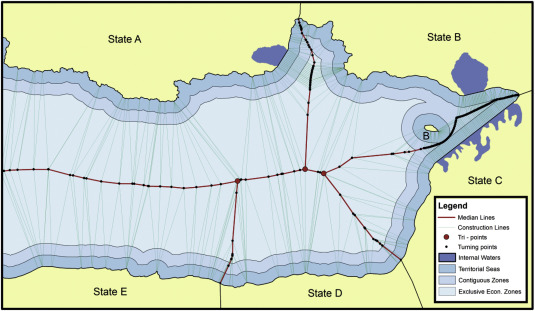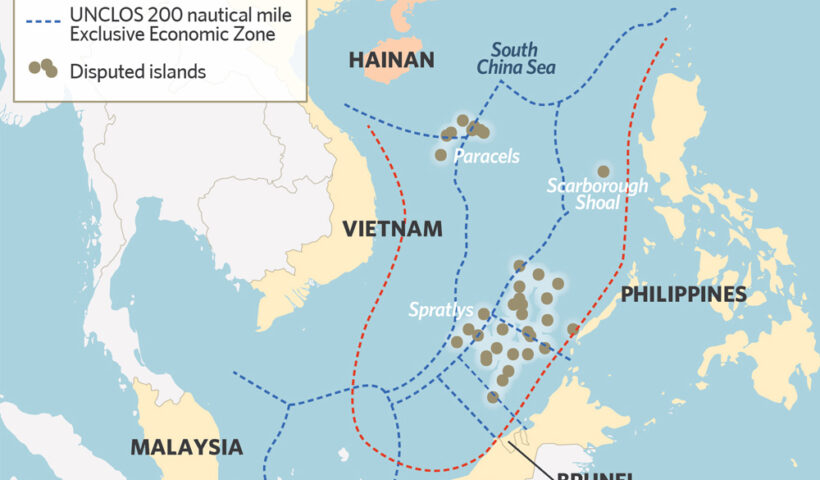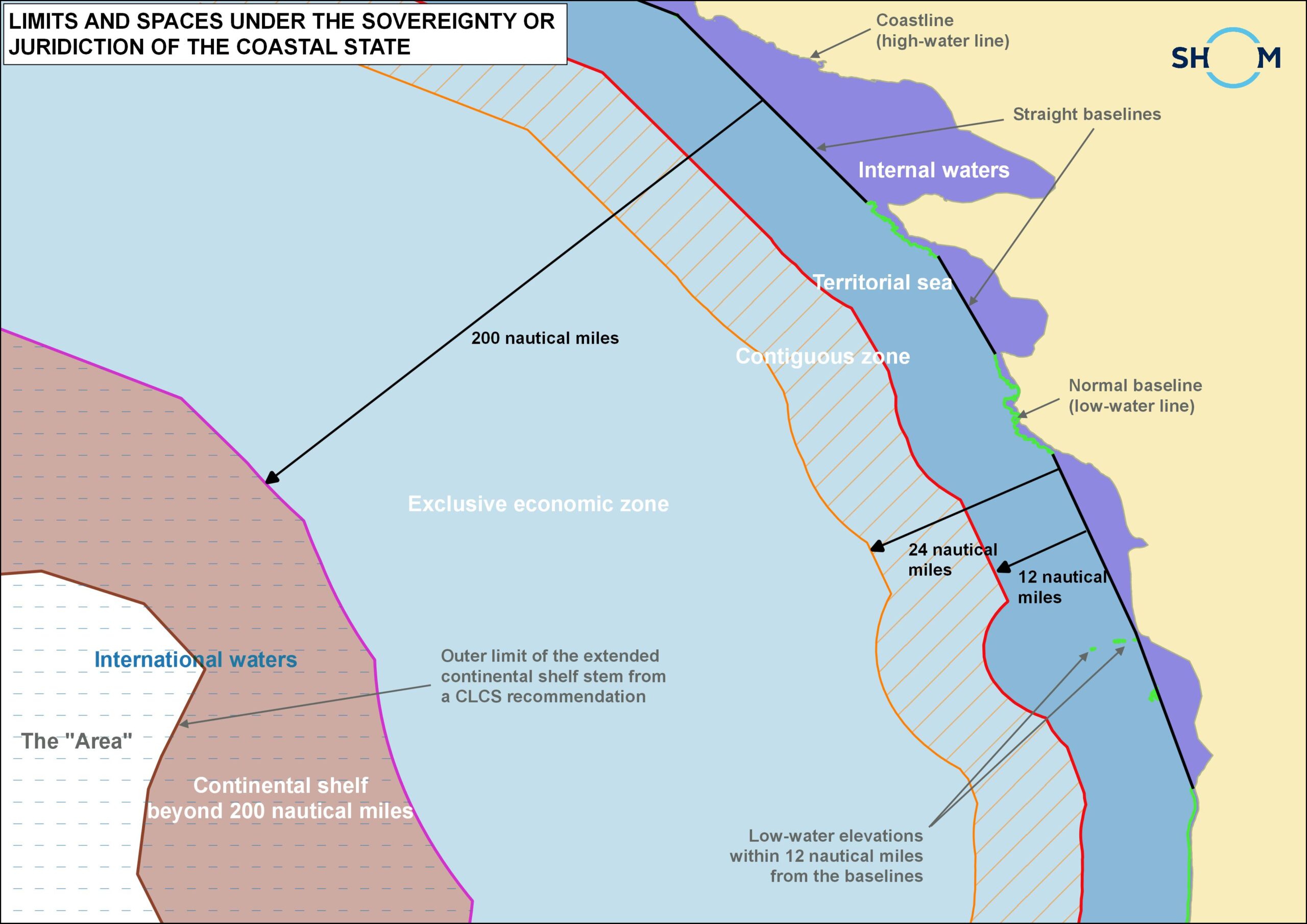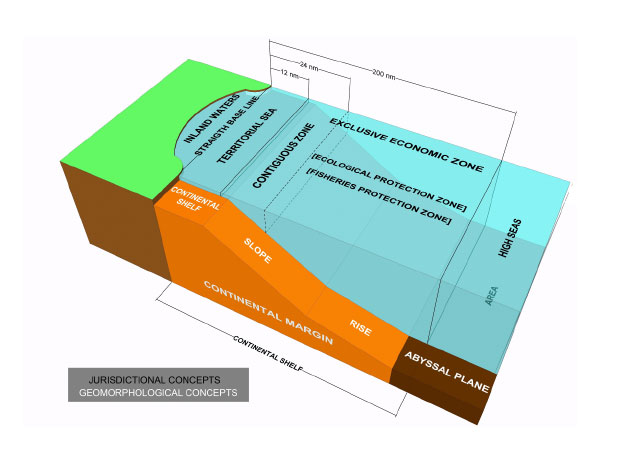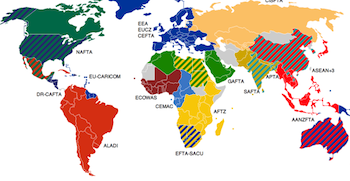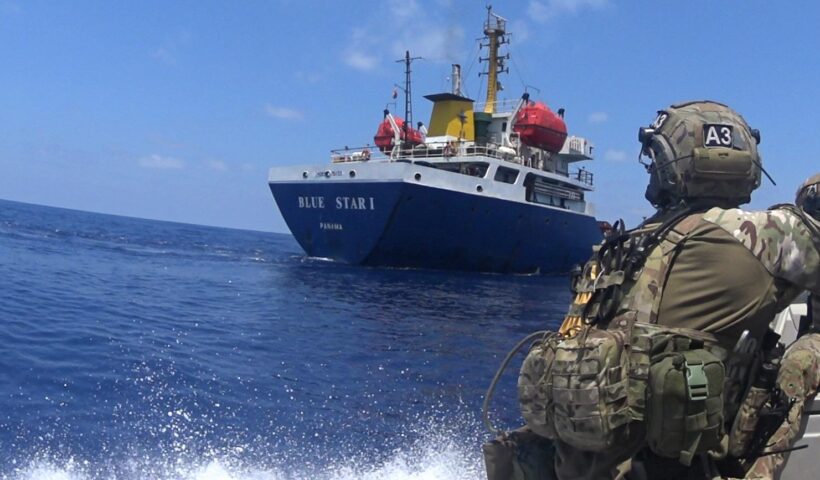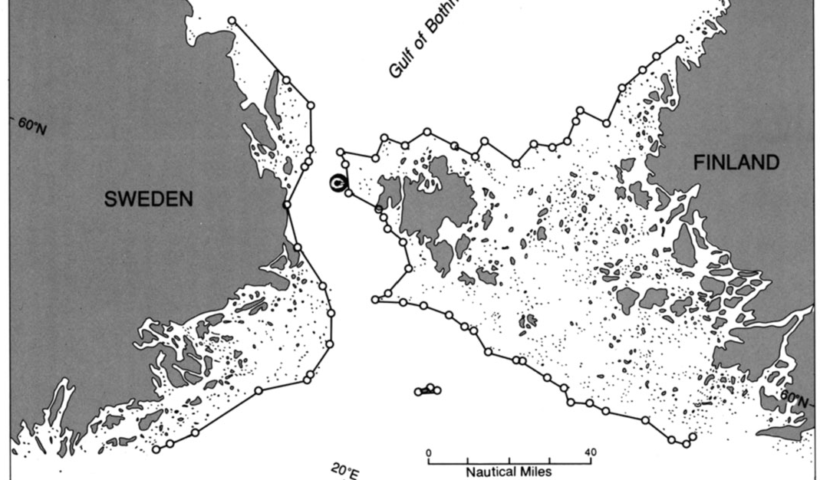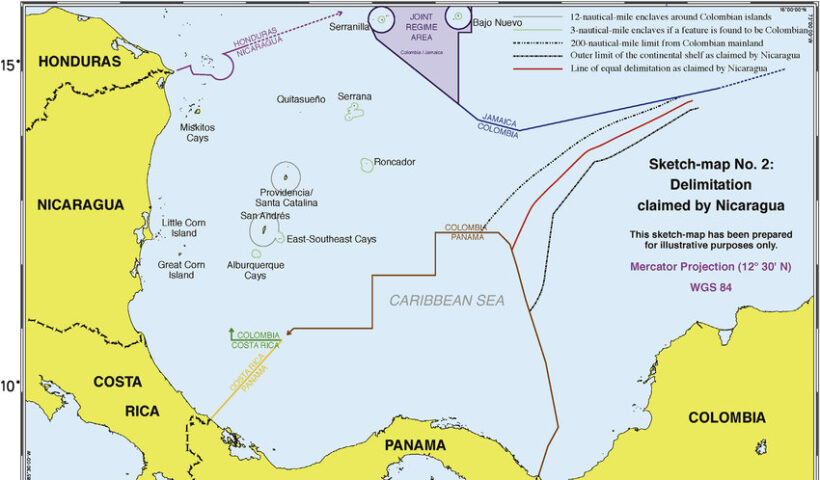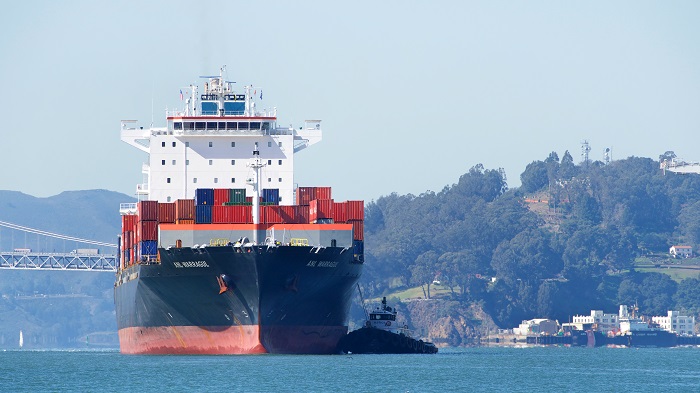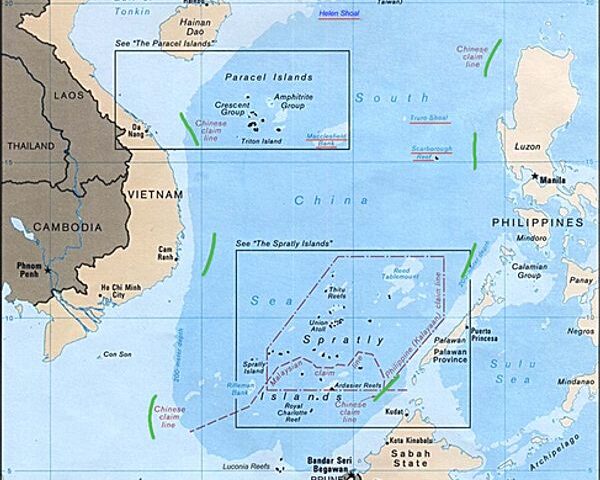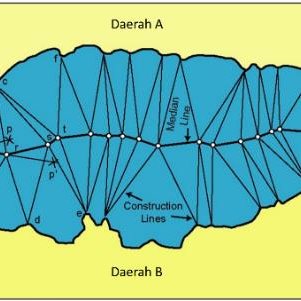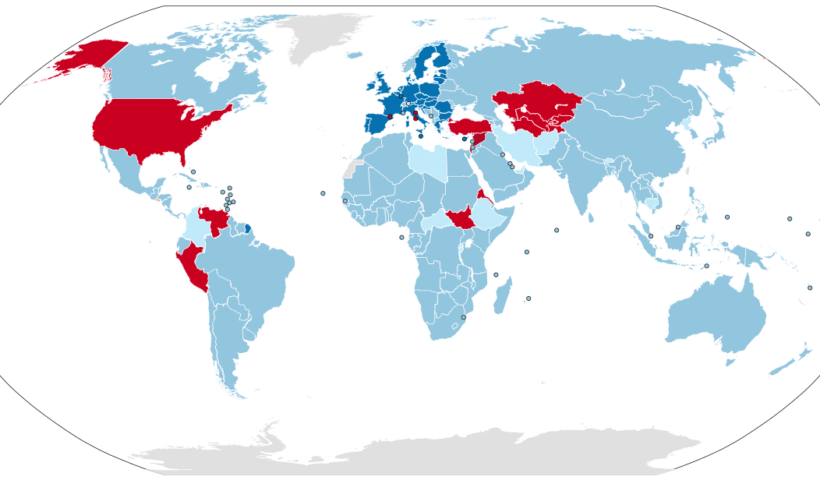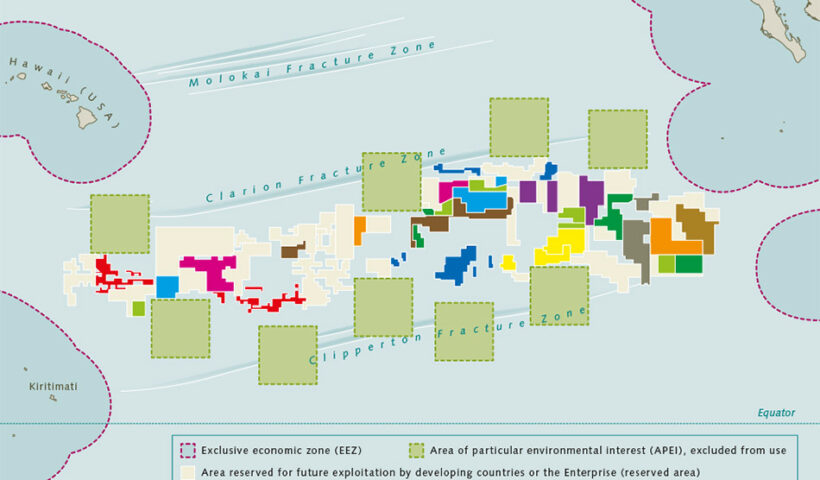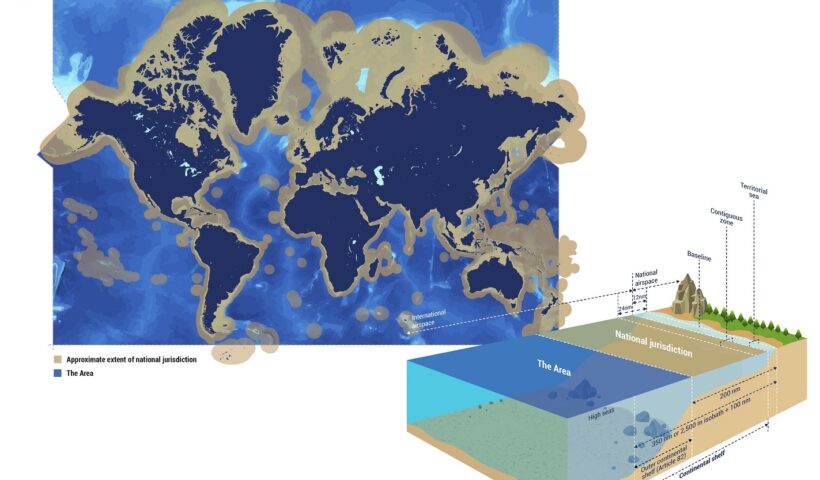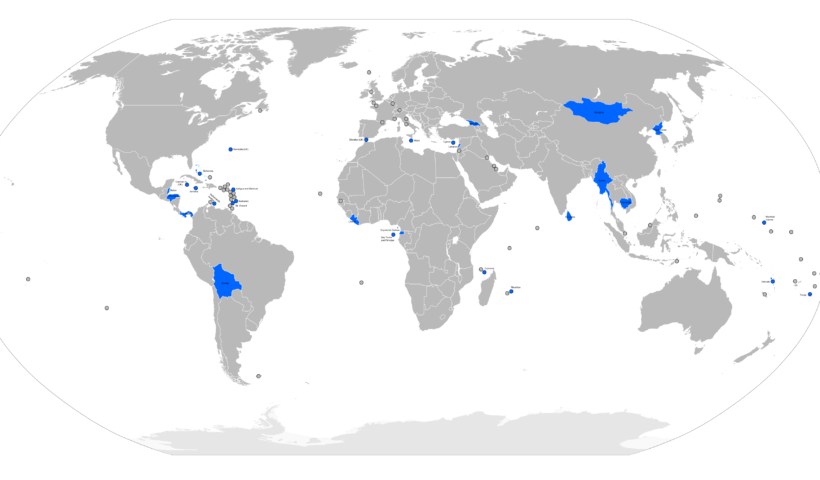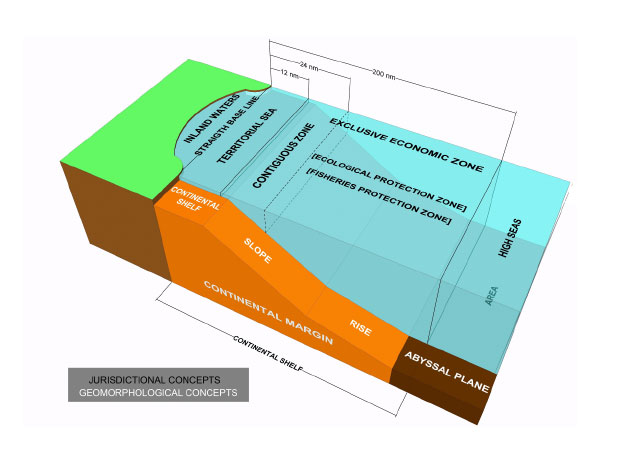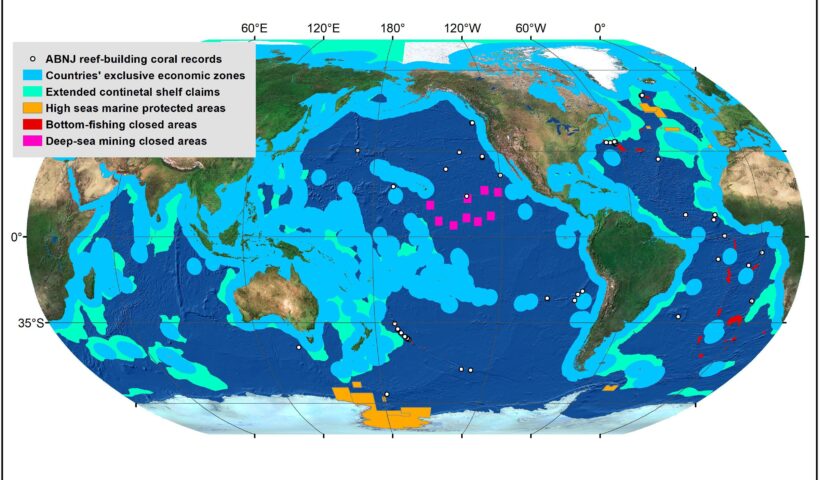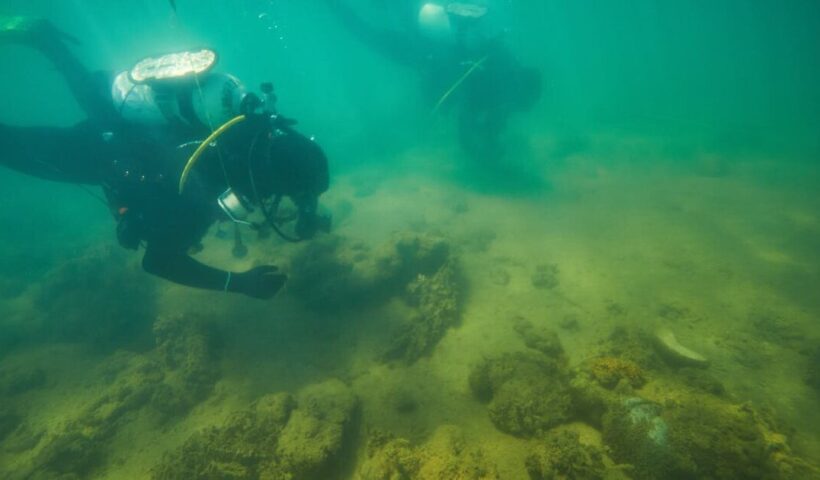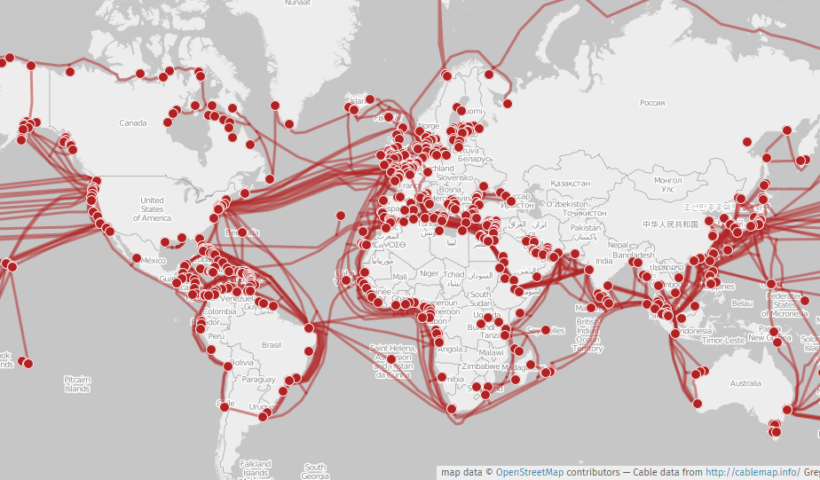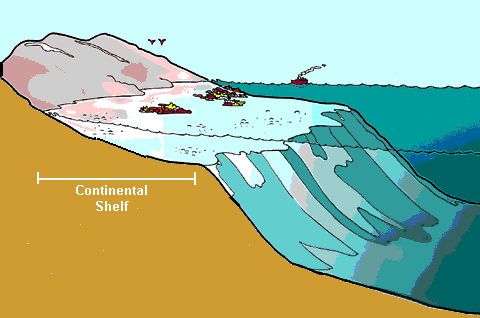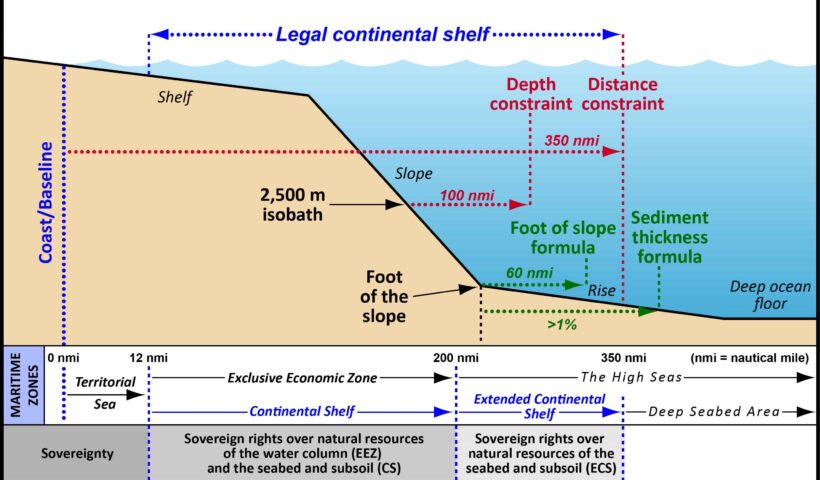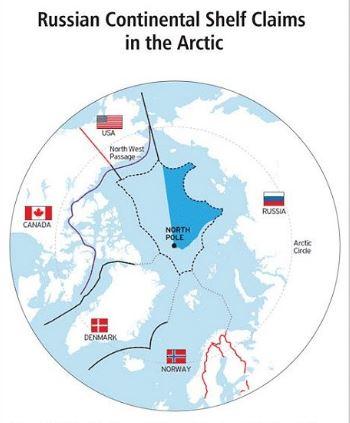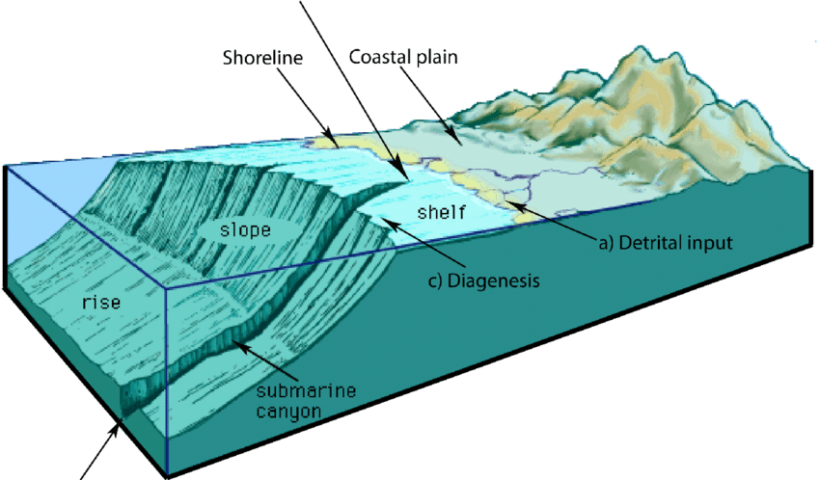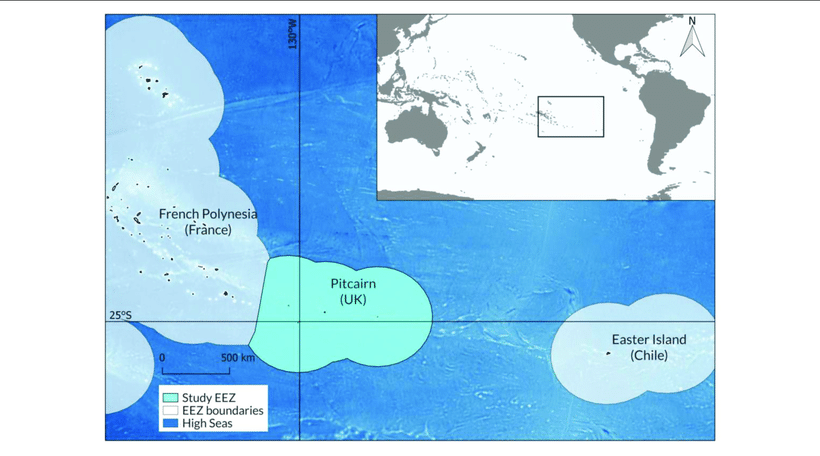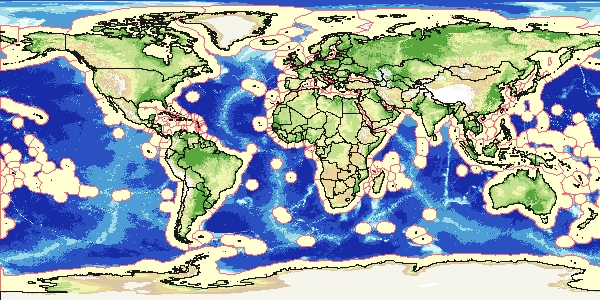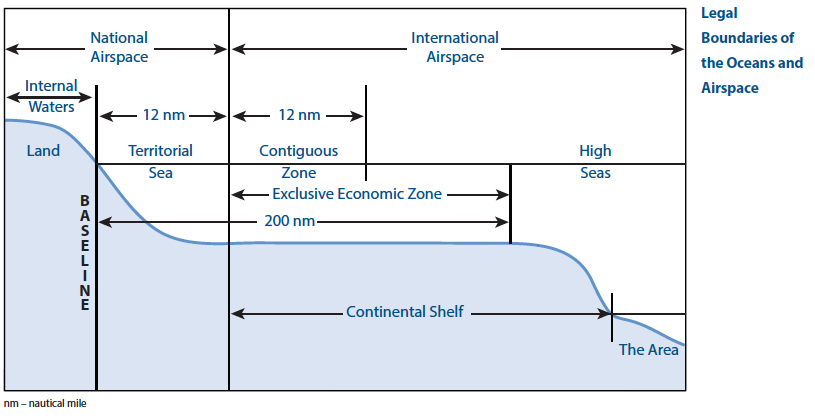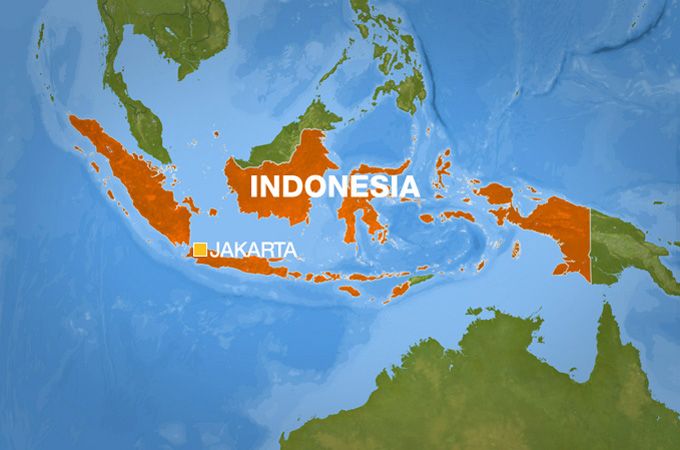Special circumstances are those circumstances which might modify the results produced by an unqualified application of the equidistance principles. Small islands and maritime features are arguably the archetypical special circumstances as much in the delimitation of the territorial sea as in the delimitation of the continental shelf/EEZ. The Court has recognized in numerous cases, including the North Sea Continental Shelf, Tunisia/Libya, Libya/Malta and Qatar v. Bahrain cases that the equitableness of an equidistance line depends on whether the precaution is taken of eliminating the disproportionate effect of certain islets, rocks and minor coastal projections.
View More what is the meaning of Special Circumstances and Relevant Circumstances in delimitation process at law of the seaTag: LOSC
equitable result in maritime delimitation and most acceptable law for delimitation process
The notion of equity is at the heart of the delimitation of the CS(continental shelf) and entered into the delimitation process with the 1945 proclamation of US President Truman, concerning the delimitation of the CS between the Unites States and adjacent States. The Truman proclamation inspired the Court during the 1969 North Sea case, when the Court stated that “delimitation is to be effected by agreement in accordance with equitable principles, and taking into account all the relevant circumstances.” This idea became doctrine and was reiterated and confirmed by the ICJ and arbitral tribunals in subsequent cases. Articles 74 and 83 of the 1982 LOS Convention concerning the delimitation of the EEZ and the CS provides for effecting the delimitation by agreement, in accordance with international law and in order to achieve an equitable result.
View More equitable result in maritime delimitation and most acceptable law for delimitation processOverlapping claims to territorial sea in law of the sea and LOSC
Delimitation of the territorial sea between States with opposite or adjacent coasts
Where the coasts of two States are opposite or adjacent to each other, neither of the two States is entitled, failing agreement between them to the contrary, to extend its territorial sea beyond the median line every point of which is equidistant from the nearest points on the baselines from which the breadth of the territorial seas of each of the two States is measured. The above provision does not apply, however, where it is necessary by reason of historic title or other special circumstances to delimit the territorial seas of the two States in a way which is at variance therewith.
This provision in a near-verbatim reproduction of the equivalent provision of the 1958 Territorial Sea Convention. It reflects a compromise reached at UNCLOS I – and again at UNCLOS III – between two general proposed methods of delimitation.
Overlapping claims to internal waters in law of the sea and LOSC
Several adjacent coastal States have designated straight territorial sea baselines in a manner that generates overlapping claims to internal waters. The LOSC contains only limited references to internal waters, none of which concern delimitation or OCA management. The absence of detailed provisions in this context flows from the characterization of internal waters under customary law: Such waters appertain to the land territory of a coastal State and are subject, with limited exception, to full territorial sovereignty. The absence in the law of the sea of detailed rules concerning internal waters is a deliberate deference to the territorial rights of coastal States.
View More Overlapping claims to internal waters in law of the sea and LOSCUnited Nations Convention on the Law of the Sea and its implementing agreements in sustainable development
On 3 February 2014, on the margins of the eighth session of the Open Working Group on Sustainable Development Goals, the Division for Ocean Affairs…
View More United Nations Convention on the Law of the Sea and its implementing agreements in sustainable developmentRIGHTS AND RESPONSIBILITIES IN MARITIME ZONES
Coastal states can claim five key maritime zones. Proceeding seawards from the coast they are internal waters, territorial seas, the contiguous zone, the exclusive economic zone (or, in some cases, an exclusive fishing zone) and the continental shelf. Archipelagic states may also claim archipelagic waters within their archipelagic baselines. Beyond these national zones of jurisdiction lie the international maritime zones of the high seas and the Area.
The rights of the coastal state and aliens vary in these maritime zones, and do so both spatially and functionally. Thus, the coastal state has more rights closer to shore, for example in internal waters and the territorial sea. Aliens retain considerable rights within a coastal state’s claimed maritime zones concerned with communication issues such as navigation, overflight and the laying of submarine cables and pipelines. The coastal state, in contrast, boasts significant resource related rights, particularly concerning fishing and mineral extraction from the seabed.
The Regional Implementation Regime for Protection and Preservation of the Marine Environment
The Regional Implementation Regime for Protection and Preservation of the Marine Environment, Agenda 21, BARCON, Bern Convention for the Protection of European Habitats, Euro-Mediterranean Process, HELCOM, How can we protect the marine environment?, LOSC, OSPAR, Preservation of the Marine Environment, What are the obligations to protect and preserve the marine environment?, Who is the responsible about the protection of marine environment?
View More The Regional Implementation Regime for Protection and Preservation of the Marine Environment“Generally Accepted” and “Applicable” International Rules for Protection and Preservation of the Marine Environment
“Generally Accepted” and “Applicable” International Rules for Protection and Preservation of the Marine Environment, GAIRAS, How can we protect marine life from degradation?, How can we protect our marine environment?, International Maritime Organization, LOSC, Protection and Preservation of the Marine Environment, United Nations Environment Programme (UNEP), What are marine environmental issues?, What are the main divisions of the marine environment?, What are the obligations to protect and preserve the marine environment?, What are three important environmental laws?, What can you contribute in the preservation of marine life?, Who is the responsible about the protection of marine environment?, Why is it important to protect the marine environment?
View More “Generally Accepted” and “Applicable” International Rules for Protection and Preservation of the Marine EnvironmentThe 1982 UN Law of the Sea Convention (LOSC) and the Protection and Preservation of the Marine Environment
The environmental regime established by the Convention is based on the combination of the jurisdictional rules of the law of the sea with objectives, principles and approaches of international environmental law. The protection and preservation of the marine environment is specifically regulated in Part XII which is the result of this combination.
However, due to the comprehensive character of the LOSC and the inter-sectoral nature of marine issues, relevant provisions can be found in different parts of the Convention (e.g., Parts V and VII on conservation and management of living resources in the EEZ and high seas or Part XIII on marine scientific research). The LOSC has codified the customary principles discussed in the previous section and, in some cases, has further clarified their content. The jurisdictional rules and Part XII are discussed separately in the next paragraphs. The 1982 UN Law of the Sea Convention (LOSC) and the Protection and Preservation of the Marine Environment, LOSC, Protection and Preservation of the Marine Environment, What do the provision of Unclos 1982 govern?, What does the law of the sea convention do?
Principle of territoriality as a base of jurisdiction in law of the sea
Principle of territoriality as a base of jurisdiction in law of the sea, D’Amato-Kennedy Act, jurisdiction in law of the sea, LOSC, objective territorial jurisdiction, Permanent Court of International Justice, Principle of territoriality, UN Charter
View More Principle of territoriality as a base of jurisdiction in law of the seawhat is the meaning of Maritime Embargo Operations in LOSC and customary international law?
what is the meaning of Maritime Embargo Operations in LOSC and customary international law?, economic enforcement measures, flag states, Iraq, lebanon, Libya, LOSC, Maritime Embargo Operations, NATO, Sierra Leone, Southern Rhodesia, The Former Yugoslavia, UN Charter, UNSC, Western European Union (WEU)
View More what is the meaning of Maritime Embargo Operations in LOSC and customary international law?STATE CLAIMS IN SUBSTANTIAL CONFORMITY WITH ARTICLE 4 (LOSC ARTICLE 7), Norway, Sweden, and Finland cases
STATE CLAIMS IN SUBSTANTIAL CONFORMITY WITH ARTICLE 4 (LOSC ARTICLE 7), Norway, Sweden, and Finland cases, Finland, LOSC, Norway, Sweden
View More STATE CLAIMS IN SUBSTANTIAL CONFORMITY WITH ARTICLE 4 (LOSC ARTICLE 7), Norway, Sweden, and Finland casesDelimitation of the Continental Shelf Beyond 200 Nautical Miles in law of the sea and customary international law
The delimitation of the continental shelf beyond 200 nautical miles is a comparatively new subject in the law of maritime delimitation. In this regard, three issues need further consideration: (i) entitlements to the continental shelf beyond 200 nautical miles, (ii) the relationship between the CLCS and an international court or tribunal, and (iii) the methodology.. Delimitation of the Continental Shelf Beyond 200 Nautical Miles in law of the sea and customary international law, Bangladesh/India case, Bangladesh/Myanmar case, continental shelf, Delimitation of the Continental Shelf, Delimitation of the Continental Shelf Beyond 200 Nautical Miles, Ghana/Côte d’Ivoire cases, LOSC, maritime delimitation, What are the characteristics of the continental shelf?, What does continental slope mean?, What extended continental shelf?, What is continental shelf limit?, What is the importance of continental shelf?, What is the largest continental shelf?, Where is the continental shelf?
View More Delimitation of the Continental Shelf Beyond 200 Nautical Miles in law of the sea and customary international lawNavigational Factors as a RELEVANT CIRCUMSTANCES in delimitation process in law of the sea and customary international law
Navigational Factors as a RELEVANT CIRCUMSTANCES in delimitation process in law of the sea and customary international law, delimitation process, Eritrea/Yemen Arbitration, Guyana/Suriname case, LOSC, Navigational Factors, navigational interests, relevant circumstances, territorial seas
View More Navigational Factors as a RELEVANT CIRCUMSTANCES in delimitation process in law of the sea and customary international lawHistoric Title and Historic Rights as a RELEVANT CIRCUMSTANCES in delimitation process in law of the sea and customary international law
Historic Title and Historic Rights as a RELEVANT CIRCUMSTANCES in delimitation process in law of the sea and customary international law, continental shelf delimitation, delimitation process, EEZ, EEZ delimitation, historic rights, Historic Title, LOSC, maritime areas, maritime delimitation, relevant circumstances, South China Sea Arbitration
View More Historic Title and Historic Rights as a RELEVANT CIRCUMSTANCES in delimitation process in law of the sea and customary international lawBaselines or basepoints as a RELEVANT CIRCUMSTANCES in delimitation process in law of the sea and customary international law
Baselines or basepoints as a RELEVANT CIRCUMSTANCES in delimitation process in law of the sea and customary international law, Baltic, baselines, basepoint, basepoints, delimitation process, equidistance method, Eritrea/Yemen case, Libya/Malta case, LOSC, Maritime Boundary Agreement between the United States and Cuba, maritime delimitations, relevant circumstances, straight-baselines system
View More Baselines or basepoints as a RELEVANT CIRCUMSTANCES in delimitation process in law of the sea and customary international lawTREATY LAW CONCERNING MARITIME DELIMITATION
TREATY LAW CONCERNING MARITIME DELIMITATION, 1958 Convention on the Continental Shelf, 1977 Anglo-French Continental Shelf case, continental shelf, Delimitation of the contiguous zone, delimitation of the territorial seas, determining the applicable law, EEZ, equidistance (median line), Equitable Principles, equitable solution, inequitable results, LOSC, method of delimitation, special circumstances, TSC, What are the stages of maritime boundary?, What is a single maritime boundary?, What is delimited boundary?, What is maritime space?, What is median line principle?, What is the difference between demarcation and delimitation?, Which law delimits world seas?
View More TREATY LAW CONCERNING MARITIME DELIMITATIONThe 1994 Implementation Agreement about seabed area, under view of law of the sea
The 1994 Implementation Agreement about seabed area, under view of law of the sea, ‘mini-treaty’ regime, 1994 Implementation Agreement, Common Heritage of Mankind, Cost-effectiveness, Economic assistance: In order to assist developing countries, Financial terms of contracts, International Seabed Authority Endowment Fund for Marine Scientific Research in the Area, LOSC, Market-orientated Approaches, Production policies, seabed Area, The obligation to transfer technology, UNCLOS III
View More The 1994 Implementation Agreement about seabed area, under view of law of the seaObligations and Liability of Sponsoring States about seabed area in law of the sea and customary international law
Obligations and Liability of Sponsoring States about seabed area in law of the sea and customary international law, area, ITLOS, LOSC, obligation to apply a precautionary approach, obligation to apply best environmental practices, obligation to assist the Authority in the exercise of control over activities in the Area, obligation to cooperate with the Authority in the establishment and implementation of programmes for monitoring and evaluating the impacts of deep seabed mining on the marine environment, obligation to ensure the availability of recourse for compensation in respect of damage caused by pollution, obligation to take measures to ensure the provision of guarantees in the event of an emergency order by the Authority for protection of the marine environment, responsibility to ensure, seabed Area
View More Obligations and Liability of Sponsoring States about seabed area in law of the sea and customary international lawSystem for the Exploration and Exploitation of Resources of the seabed Area(common heritage materials)
Activities in the Area are to be carried out by the Enterprise and other commercial operators in accordance with Article 153(2) of the LOSC. The commercial operators include States Parties, State enterprises, natural or juridical persons which possess the nationality of States Parties or are effectively controlled by them or their nationals provided for in Article 153(2). This arrangement is called the ‘parallel system’. This system represents a compromise between various interest groups. Actually the LOSC provides three operational modes for deep seabed mining.
. System for the Exploration and Exploitation of Resources of the seabed Area(common heritage materials), Common Heritage, Exploration and Exploitation of Resources, LOSC, seabed Area
International Seabed Authority, its Jurisdiction, authorities and obligations in law of the sea and LOSC
The International Seabed Authority is an international organisation governing the Area and activities there. All States Parties to the LOSC are ipso facto members of the Authority. The Authority sits in Jamaica and comprises three principal organs, that is to say, an Assembly, a Council and a Secretariat. In addition, it has its operational organ, i.e. the Enterprise.
The Assembly, which consists of all the members of the Authority, is the supreme organ of the Authority to which the other principal organs shall be accountable as specifically provided for in the LOSC. The Assembly is entitled to establish general policies on any question or matter within the competence of the Authority.
The Council, which consists of thirty-six members of the Authority, is the executive organ of the Authority. Each member of the Council shall be elected for four years. The Council is empowered to establish the specific policies to be pursued by the Authority on any question or matter within the competence of the Authority.
The Secretariat of the Authority comprises a Secretary-General and such staff as the Authority may require. In the performance of their duties, the Secretary-General and the staff shall not seek or receive instructions from any government or from any other source external to the Authority. They shall refrain from any action which might reflect on their position as international officials responsible only to the Authority. In addition, the Secretary-General and the staff shall have no financial interest in any activity relating to exploration and exploitation in the Area. Those qualifications will contribute to secure the independence and neutrality of the Secretariat. International Seabed Authority, its Jurisdiction, authorities and obligations in law of the sea and LOSC, Cobalt-Rich Crusts Regulations, International Seabed Authority, ITLOS, Jamaica, LOSC, Polymetallic Nodules Regulations, seabed disputes chamber, the Sulphides Regulations
Exceptional Measures for Interception of Foreign Vessels on the High Seas based on law of the sea and customary international law
Exceptional Measures for Interception of Foreign Vessels on the High Seas based on law of the sea and customary international law, 1995 Council of Europe Agreement on Illicit Traffic by Sea, 2003 Agreement Concerning Co-operation in Suppressing Illicit Maritime and Air Trafficking in Narcotic Drugs and Psychotropic Substances in the Caribbean Area, 2008 CARICIM Maritime and Airspace Security Co-operation Agreement, Convention on Psychotropic Substances, illicit traffic in narcotic drugs, Interception of Foreign Vessels, LOSC, Self-defence on the High Seas, Single Convention on Narcotic Drugs, UN Convention against Illicit Traffic in Narcotic Drugs and Psychotropic Substances
View More Exceptional Measures for Interception of Foreign Vessels on the High Seas based on law of the sea and customary international lawExceptions to the Exclusive Jurisdiction of the Flag State on the law of the sea and customary international law
Exceptions to the Exclusive Jurisdiction of the Flag State on the law of the sea and customary international law, 1995 Council of Europe Agreement on Illicit Traffic by Sea, 2003 Agreement Concerning Co-operation in Suppressing Illicit Maritime and Air Trafficking in Narcotic Drugs and Psychotropic Substances in the Caribbean Area, 2008 CARICIM Maritime and Airspace Security Co-operation Agreement, Convention on Psychotropic Substances, illicit traffic in narcotic drugs, Interception of Foreign Vessels, LOSC, Self-defence on the High Seas, Single Convention on Narcotic Drugs, UN Convention against Illicit Traffic in Narcotic Drugs and Psychotropic Substances
View More Exceptions to the Exclusive Jurisdiction of the Flag State on the law of the sea and customary international lawwhat is the meaning of Flags of Convenience or open registry in the law of the sea and customary international law?
While there is no generally agreed definition, ‘flag of convenience’ or ‘open registry’ States refer, in essence, to States that permit foreign shipowners, having very little or virtually no real connection with those States, to register their ships under the flags of those States.
The flag of convenience States allow shipowners to evade national taxation and to avoid the qualifications required of the crews of their ships. In so doing, flag of convenience States give shipowners an opportunity to reduce crew costs by employing inexpensive labour, while these States receive a registry fee and an annual fee. As one of the few variables in shipping costs is crew costs, a highly competitive market within the international shipping industry prompts shipowners to resort to open registry States. what is the meaning of Flags of Convenience or open registry in the law of the sea and customary international law?, archipelagic sea, archipelagic waters, Basel Convention on the Control of Transboundary Movements of Hazardous Wastes and their Disposal, COLREG, Convention on the International Regulations for Preventing Collisions at Sea, De iure praedae, De mare clausum, De mare liberum, freedom of navigation, IMO, International Convention for the Prevention of Pollution from Ships, International Convention for the Safety of Life at Sea, International Maritime Organization, international straits, maritime traffic, MARPOL, right of innocent passage, SOLAS, territorial sea, terrorism, United Nations Convention on the Law of the Sea
the meaning of The Nationality of a Ship and flag states on the law of the sea and customary international law
The flag State jurisdiction is exercised on the basis of the nationality of a ship. Thus, the nationality of a ship is of central importance in order to establish the juridical link between a State and a ship flying its flag. Under international law, each State is entitled to determine conditions for the grant of its nationality to ships. In the M/V ‘Saiga’ case, ITLOS ruled:
Determination of the criteria and establishment of the procedures for granting and withdrawing nationality to ships are matters within the exclusive jurisdiction of the flag State. the meaning of The Nationality of a Ship and flag states on the law of the sea and customary international law, flag State jurisdiction, flag states, Grand Prince case, ITLOS, LOSC, Nationality of a Ship, Tomimaru case, UN Convention on Conditions for Registration of Ships
Principle of the Freedom of the High Seas meaning in law of the sea and customary international law
Principle of the Freedom of the High Seas meaning in law of the sea and customary international law, Article 89 of the LOSC, Freedom of fishing, freedom of navigation, Freedom of overflight, Freedom of scientific research, Freedom of the High Seas, Freedom to construct artificial islands, Freedom to lay submarine cables and pipelines, LOSC, M/V ‘Louisa’ case, military activities
View More Principle of the Freedom of the High Seas meaning in law of the sea and customary international lawSpatial Scope of the High Seas in law of the sea and customary international law
The LOSC devotes Part VII to the high seas. Under Article 86, the high seas are defined as:
all parts of the sea which are not included in the EEZ, in the territorial sea or in the internal waters of a State, or in the archipelagic waters of an archipelagic State. Where a coastal State has established its EEZ, the landward limit of the high seas is the seaward limit of the EEZ. Where the coastal State has not claimed its EEZ, the landward limit of the high seas is the seaward limit of the territorial sea. In this case, the seabed of the high seas is the continental shelf of the coastal State up to the limit fixed by the international law of the sea. The seabed and subsoil beyond the outer limits of the continental shelf are the Area, which is the common heritage of mankind. The superjacent waters above the Area are always the high seas. Where the continental shelf extends beyond the limit of 200 nautical miles, the superjacent waters and the airspace above those waters are the high seas under Article 78 of the LOSC.. Spatial Scope of the High Seas in law of the sea and customary international law, EEZ, High seas, law of the sea, LOSC, seabed, Superjacent Waters
Protection of Archaeological and Historical Objects Found Within the Continental Shelf in the law of the sea and customary international law
It has been said that ‘the greatest museum of human civilization lies on the seabed’. Owing to the development of underwater archaeology as a scientific discipline, the protection of underwater cultural heritage has begun to emerge as a crucial issue in international law. Thus this section addresses two key instruments on this subject: the LOSC and the Convention on the Protection of Underwater Cultural Heritage adopted by UNESCO on 2 November 2001 (hereinafter the UNESCO Convention). . Protection of Archaeological and Historical Objects Found Within the Continental Shelf in the law of the sea and customary international law, Archaeological objects, continental shelf, Convention on the Protection of Underwater Cultural Heritage, EEZ, enclosed sea, Historical Objects, LOSC, semi-enclosed sea, underwater cultural heritage
View More Protection of Archaeological and Historical Objects Found Within the Continental Shelf in the law of the sea and customary international lawFreedoms of Third States on the continental shelf of other states based on the law of the sea and customary international law
(a) Submarine Cables and Pipelines With respect to the freedom of use on the continental shelf, Article 79(1) stipulates that all States are entitled to lay submarine cables and pipelines on the continental shelf.
In practice, submarine cables are divided into two main categories: submarine power cables used to transmit electricity, and submarine communication cables used to transmit data communications traffic. At present, the overwhelming majority of the world’s international telecommunication relies on submarine fibre-optic cables, and submarine telecommunication cables have become a critical global communications infrastructure. The oil and gas pipeline is also of crucial importance as a reliable means of energy transport.
Freedoms of Third States on the continental shelf of other states based on the law of the sea and customary international law, continental shelf, EEZ, High seas, LOSC, marine pollution, Pipelines, Submarine Cables, Superjacent Waters
The Sovereign Rights of the Coastal State Over the Continental Shelf in law of the sea and customary international law
The coastal State exercises sovereign rights over the continental shelf for the purpose of exploring and exploiting its natural resources in accordance with Article 77(1). The principal features of sovereign rights can be summarised in six points:…The Sovereign Rights of the Coastal State Over the Continental Shelf in law of the sea and customary international law, coastal State, continental shelf, EEZ, inherent rights, LOSC, natural resources, non-living resources, Non-natural resources, Sovereign Rights
View More The Sovereign Rights of the Coastal State Over the Continental Shelf in law of the sea and customary international lawProcedures to Establish the Outer Limits of the Continental Shelf on the law of the sea and LOSC
Procedures to Establish the Outer Limits of the Continental Shelf on the law of the sea and LOSC, Commission on the Limits of the Continental Shelf, continental shelf, continental shelf in international law, continental shelf meaning, continental shelf unclos, geodetic data, LOSC, Outer Limits of the Continental Shelf, the continental shelf and its outer delimitation, The Establishment of the Outer Limits of the Continental Shelf, What are the limits of continental shelf?, What does the continental shelf of a coastal state comprise?, What is continental shelf in international law?, What is continental shelf theory?, What is the outer edge or ending point of the continental shelf?
View More Procedures to Establish the Outer Limits of the Continental Shelf on the law of the sea and LOSCThe Commission on the Limits of the Continental Shelf, duties, authorities and works
As we shall discuss later, the coastal State intending to claim a continental shelf beyond 200 nautical miles is required to submit information on the limits of the shelf to the Commission. The Commission consists of twenty-one members who shall be experts in the field of geology, geophysics or hydrography. The members of the Commission are to be elected by States Parties to the LOSC from among their nationals, having due regard to the need to ensure equitable geographical representation, and they shall serve in their personal capacities in accordance with Article 2(1) of Annex II…The Commission on the Limits of the Continental Shelf, duties, authorities and works, Commission on the Limits of the Continental Shelf, continental shelf, LOSC, What are the characteristics of the continental shelf?, What does continental slope mean?, What extended continental shelf?, What is continental shelf limit?, What is the importance of continental shelf?, What is the largest continental shelf?, Where is the continental shelf?
View More The Commission on the Limits of the Continental Shelf, duties, authorities and worksCriteria for Determining the Outer Limits of the Continental Shelf Beyond 200 Nautical Miles(extended continental shelf (ECS))
Where the outer edge of the continental margin extends beyond 200 nautical miles, the limit of the continental shelf is to be determined on the basis of the geological criteria set out by Article 76(4). This provision contains two criteria for fixing the seaward limit of the continental shelf.
View More Criteria for Determining the Outer Limits of the Continental Shelf Beyond 200 Nautical Miles(extended continental shelf (ECS))what is the meaning of CONTINENTAL SHELF on the law of the sea and customary international law?
In light of the dictum of the Court and Article 76 of the LOSC, it may be argued that currently the distance criterion is the legal title over the continental shelf up to 200 nautical miles, and the natural prolongation offers legal title over the shelf beyond 200 nautical miles. what is the meaning of CONTINENTAL SHELF on the law of the sea and customary international law?, Commission on the Limits of the Continental Shelf, continental shelf, Continental Shelf Beyond 200 Nautical Miles, extended continental shelf, LOSC, 200 metres isobath, 200 nautical miles, Article 76 of the LOSC, continent, continental shelf, Convention on the Continental Shelf, LOSC, North Sea Continental Shelf cases, seabed, submarine, subsoil, Truman Proclamation
View More what is the meaning of CONTINENTAL SHELF on the law of the sea and customary international law?Historic Rights of countries on the EEZ, based on law of the sea and customary international law
Historic Rights of countries on the EEZ, based on law of the sea and customary international law, EEZ, exclusive economic zone, High seas, historic rights, LOSC, south china sea
View More Historic Rights of countries on the EEZ, based on law of the sea and customary international lawResidual Rights of countries on the EEZ based on law of the sea and customary international law
Residual Rights of countries on the EEZ based on law of the sea and customary international law, EEZ, exclusive economic zone, LOSC, Residual Rights
View More Residual Rights of countries on the EEZ based on law of the sea and customary international lawFreedoms of Third States activity on the EEZ, based on the law of the sea and customary international law
Freedoms of Third States activity on the EEZ, based on the law of the sea and customary international law, coastal State jurisdiction in the EEZ, freedom of laying submarine cables, LOSC, Third States activity on the EEZ
View More Freedoms of Third States activity on the EEZ, based on the law of the sea and customary international lawJurisdiction of Coastal States Over the EEZ, based on law of the sea, customary international law and LOSC
Jurisdiction of Coastal States Over the EEZ, based on law of the sea, customary international law and LOSC, artificial islands, EEZ, exclusive economic zone, IMO, ITLOS, LOSC
View More Jurisdiction of Coastal States Over the EEZ, based on law of the sea, customary international law and LOSCLegal Status of the EEZ at LOSC, law of the sea and customary international law
In short, unlike territorial sovereignty, the sovereign rights of the coastal State over the EEZ lack comprehensiveness of material scope. With respect to matters accepted by international law, however, the coastal State can exercise both legislative and enforcement jurisdiction over all people within the EEZ in an exclusive manner. The essential point is that the rights of the coastal State over the EEZ are spatial in the sense that they can be exercised solely within the particular space in question regardless of the nationality of persons or vessels. Thus the coastal State jurisdiction over the EEZ can be regarded as a spatial jurisdiction. Due to the lack of comprehensiveness of material scope, this jurisdiction should be called a limited spatial jurisdiction.. Legal Status of the EEZ at LOSC, law of the sea and customary international law, coastal State, EEZ, ITLOS, Legal Status of the EEZ, limitation ratione materiae, LOSC, ratione materiae, ratione personae, Sovereign Rights Over the EEZ
View More Legal Status of the EEZ at LOSC, law of the sea and customary international lawJurisdiction of Archipelagic States Over Archipelagic Waters(based on law of the sea, customary international law and LOSC)
As clearly stated in Article 49(1) and (2) of the LOSC, archipelagic waters are under the territorial sovereignty of the archipelagic State. However, care should be taken in noting that the exercise of the archipelagic State’s territorial sovereignty is subject to general international law and specific provisions under Part IV of the LOSC.. Jurisdiction of Archipelagic States Over Archipelagic Waters(based on law of the sea, customary international law and LOSC), archipelagic doctrine, Archipelagic States, Archipelagic States and Maritime Navigation, archipelagic waters, Archipelagic Waters and Exclusive Economic Zone, archipelagic waters unclos, archipelagic waters vs internal waters, Duzgit Integrity Arbitration, Jurisdiction of Archipelagic States, Legal status of archipelagic waters, LOSC, The Archipelagic States Concept, What are the four categories of waters under the Unclos?, What is archipelagic baseline?, What is the archipelagic rule?, Which waters are identified as archipelagic waters?
View More Jurisdiction of Archipelagic States Over Archipelagic Waters(based on law of the sea, customary international law and LOSC)

